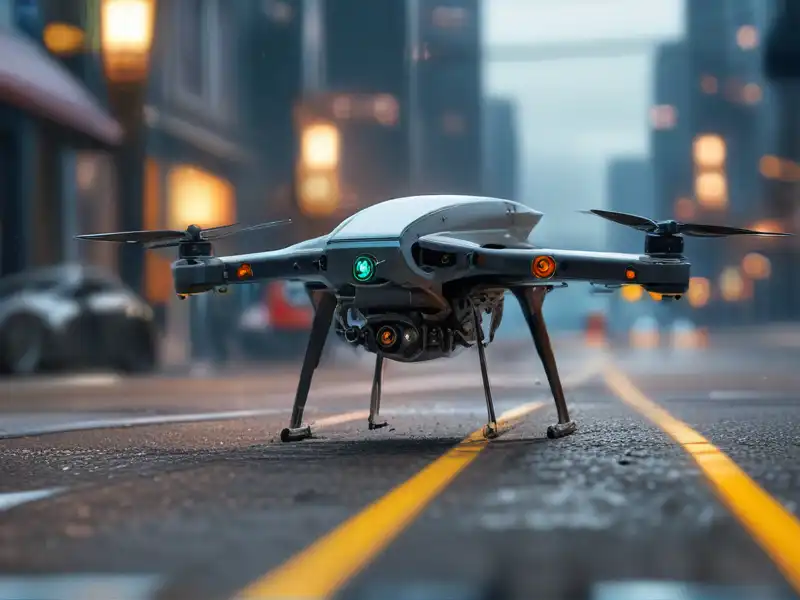Up in the Air: Modern Technologies to Locate Drones with Ease
Although any advancement in the sphere of technology opens a new way for the whole society to thrive and excel, they may also pose significant threats, especially when used by ill-wishers or intrusive people. Drones themselves represent a great side of tech breakthroughs, for they are usually employed for commercial, recreational, and security purposes. Nevertheless, not everyone is ready to welcome drones on their properties.
Luckily, there appear various tools that may help one get rid of the “drone plague”, from concealed ID number tracker systems to more apparent optical sensors and net-based capture software. The question of what tactics to stick to while addressing this problem is yet to be resolved.
What Does Counter-Drone Technology Mean?
It is a well-known fact that most public and private areas prohibit quadcopter drone usage in their airspace due to security and privacy reasons. Indeed, the human right to private life is inviolable, this is why one is always free to detect and prevent drone invasion (yet with peaceful strategies only!). The most appropriate way to combat uncoordinated raids comes down to counter-drone technologies.
A set of tools and systems usually called "counter-drone technologies" are intended to recognize, locate, follow, and lessen the risks posed by unapproved or hostile drones, whether equipped with video cameras or other devices to spy on the people around. As soon as drones might be potentially abused for various malevolent purposes, i.e., privacy invasion, security breaches, and even terrorism, it is vital to know how to defend yourself and how to use them so as not to interrupt other's serenity.
In simple terms, counter-drone technology combines various approaches and tactics to address separate stages of a drone threat, which may involve the use of sensors, e.g., optical, acoustic, radio frequency (RF) scanning, and radars, too. These systems help one identify quadcopter drones and differentiate them from other flying objects by the flight patterns and signals of drones. Nonetheless, the decisions on their future after these are detected should be made at a higher level.
The Growing Concern of Drone Invasion
For sure, drones may become a good tool to explore the landscape from an aerial view, which is useful for filmmaking, logistics, and agriculture, and the threats cannot be easily eliminated. Due to how simple it is to get and employ drones, people with bad intentions might benefit from these advanced technologies and exploit them in their favor. This, though, presents severe problems for both government agencies and citizens not to mention.
Privacy
The invasion of privacy is one of the most urgent problems in today's world. Drones with sophisticated sensors and high-resolution cameras may easily capture any movement and accurately detailed photos, frequently without the subject's awareness or permission. Concerns over the possibility of surveillance, spying on corporations, and unlawful data collection inevitably raise a problem of how legal it is to use drones and whether this should be restricted on the governmental level.
Airspace Invasion
Besides, when used in prohibited locations, drones may pose serious security risks in addition to privacy issues which include possible damage to vital infrastructure, e.g., power plants and airports, with potentially disastrous outcomes. In 2018, some reported that there were noticed numerous drones at Gatwick Airport (the UK), which resulted in flight delays, affecting almost 140,000 passengers and illustrating the potential disruption and inconveniences.
Illegal Activities
Additionally, most people cannot tolerate this trend, as quadcopter drones may be used for illicit activities such as drug delivery, illegal photography, prison smuggling, and more. These incidents do emphasize the importance of strong anti-drone laws and technologies in order to reduce the dangers connected with drone intrusions.
Innovations in Detection Technologies
Not only does the industry offer new drones and other types of small aircraft, but it also develops efficient counter-drone technologies. Seems like a two-sided game. To mitigate any risks, one is encouraged to rely on advanced detection systems so as to pass this information further to the responsible authorities to guarantee safety and security in a variety of contexts. Do not try to shoot down the drone, for it is also illegal to damage possessions in turn.
Radar Systems: Over time, there appeared different radar systems that can detect tiny, low-flying profiles of drones, not so easily distinguished from birds and other flying objects which may hinder the process of identification.
Radio Frequency (RF) Detection: The purpose of RF detection systems is to quickly locate the signals used for communication between drone operators and their vehicles. Even in complex metropolitan environments, these systems are able to identify and pinpoint the source of quadcopter drone control through the scanning and analysis of the RF spectrum.
Acoustic Sensors: The distinctive sound profiles made by drone engines and other components are utilized for acoustic detection. With the use of sensitive microphones, the system records and analyzes the noises, which enables drone tracking and detection even in situations when visibility is restricted.
Optical Systems: Sometimes, drones can be also visually identified thanks to high-resolution cameras and sophisticated image processing algorithms. These usually capture comprehensive details regarding the construction and model of a drone, which might be improved by integration with AI and machine learning.
Combined and Hybrid Systems: So as to overcome the limitation of the above-mentioned detection methods, one may also involve combined and hybrid systems that incorporate many technologies like radar, RF, acoustic, and optical sensors simultaneously. In fact, this can efficiently work in dynamic and complicated contexts where a single technology might not be sufficient.
One of the most important ways to overcome the issues created by the development of quadcopter drones is to keep up with the rapid advancements in detecting technologies. The safe and secure integration of drones into our daily lives is essential, and people are responsible for their actions, whether they protect themselves or get curious about others. Respect each other no matter how bad your days are and let everyone live their lives privately.



